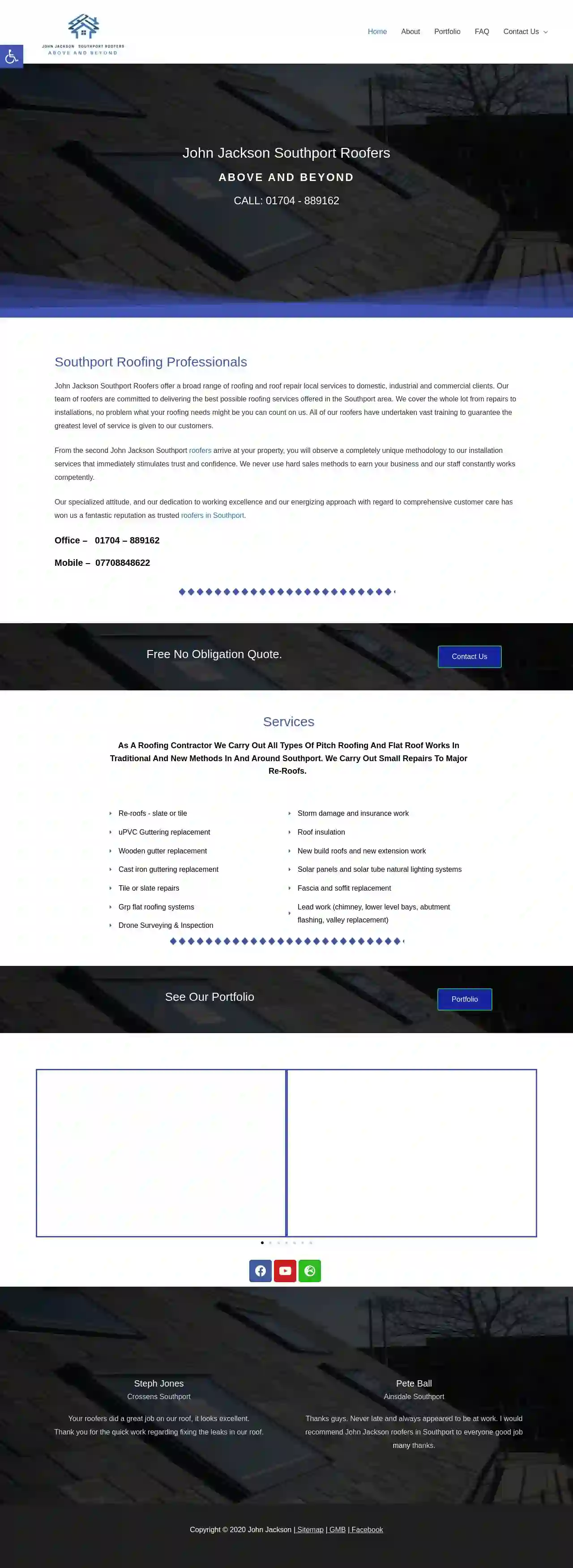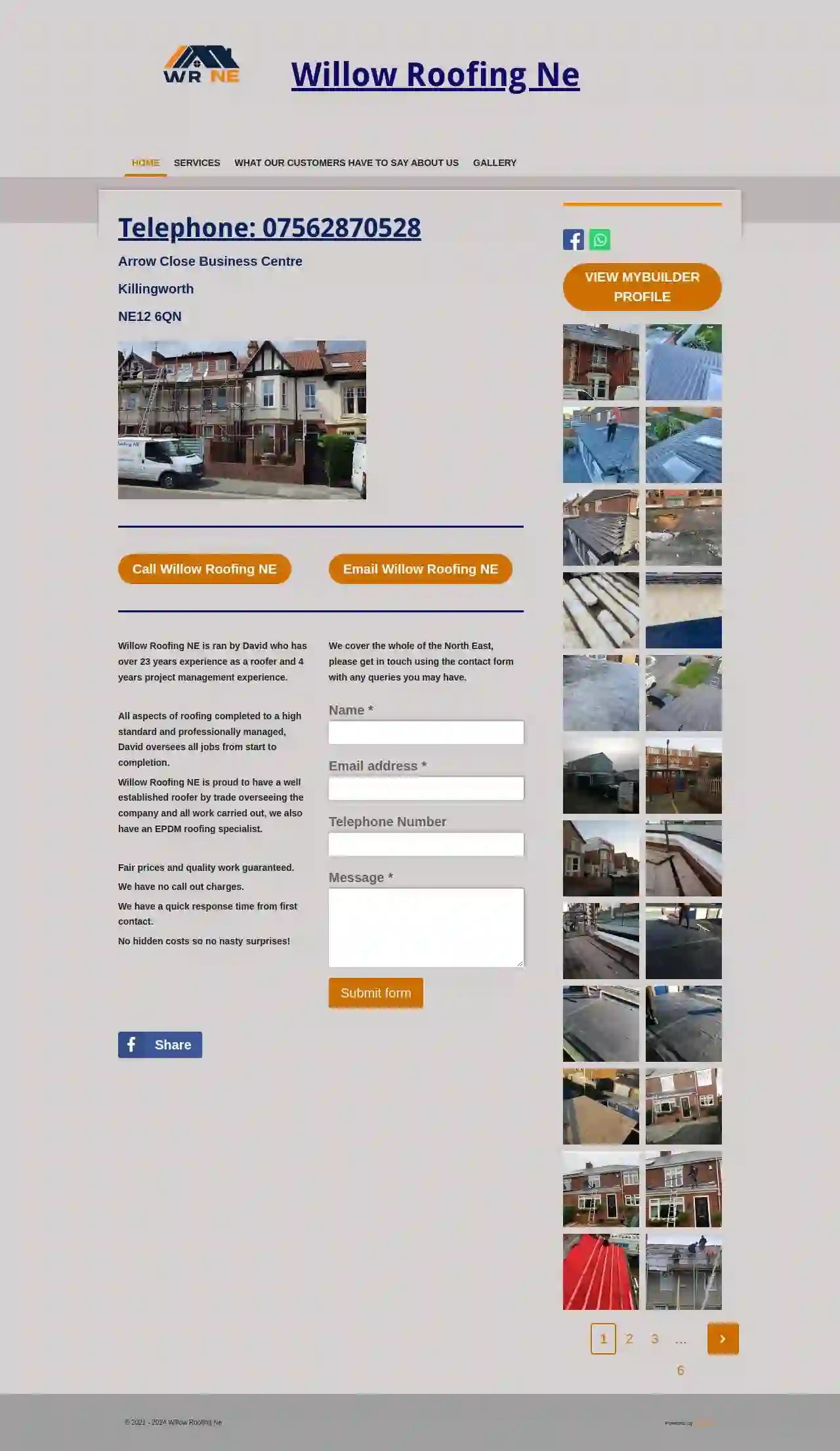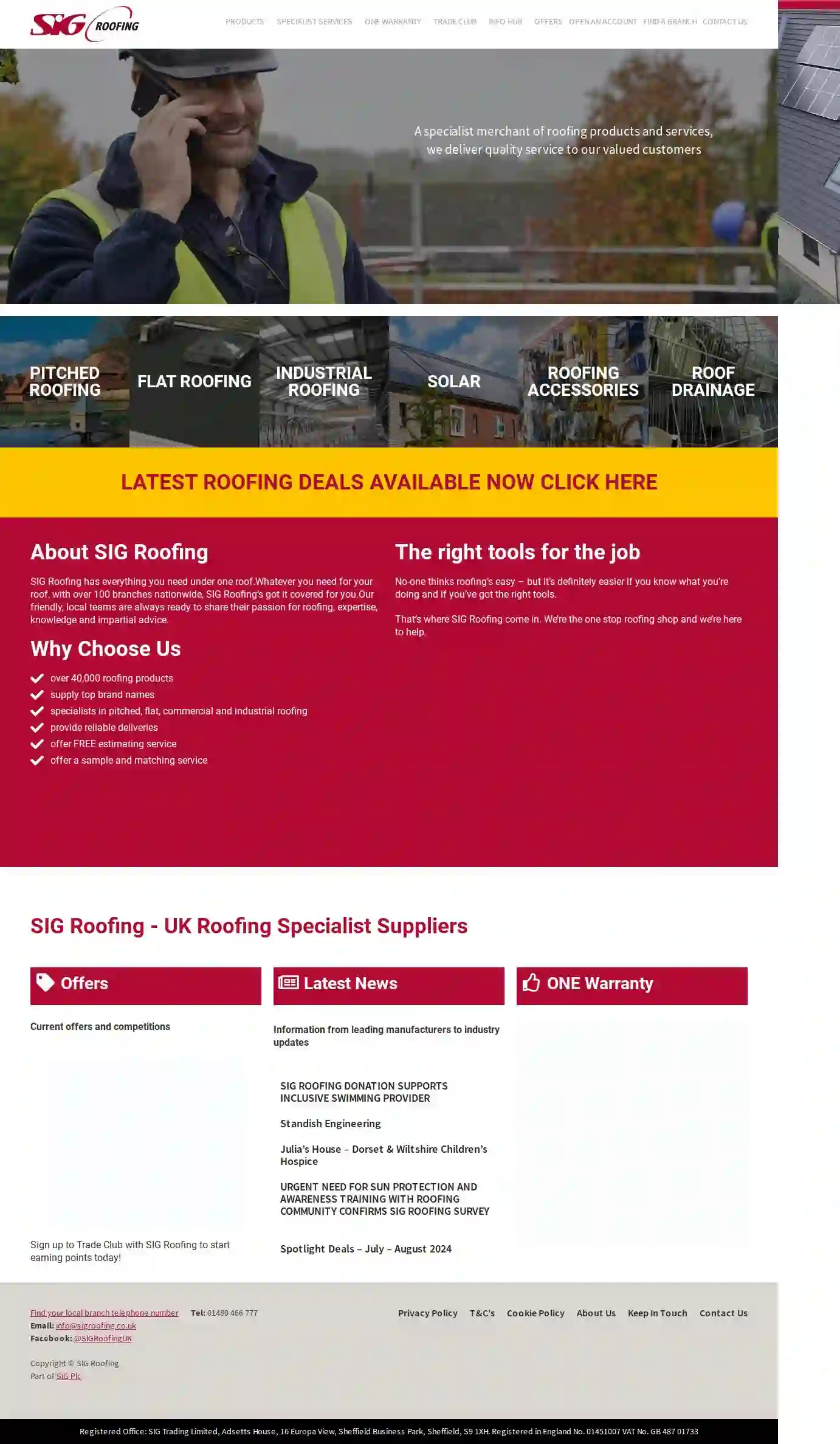Flat Roof Installers Blackpool
Top Flat Roof Installers in Blackpool
Get up to 3 Flat Roofing Contractor quotes for your project today! Compare profiles, reviews, accreditations, portfolio, etc... and choose the best deal.

John Jackson Roof Building Construction
4.611 reviewsCemetery Road, Unit 8, George Business Park, Southport, PR8 5EG, GBJohn Jackson Southport Roofers is a family-run business with almost 15 years of experience in the roofing industry. John Jackson, the director, began his roofing career in 2001 and spent twelve years working for a local family roofing business before starting his own company in 2013. The company has built a strong reputation for providing high-quality roofing services to domestic, industrial, and commercial clients in Southport and the surrounding areas. They offer a wide range of services, including traditional slate roofing, tiling, felt roofing, lead works, chimney works, roof windows, fascia and soffit works, guttering, pointing, and many other associated building works. All work is carried out to a high standard and is guaranteed for ten years.
- Services
- Why Us?
- Accreditations
- Our Team
- Testimonials
- Gallery
Get Quote
Willow Roofing NE
59 reviewsArrow Close Business Centre, Killingworth, NE12 6QN, GBWillow Roofing NE is a roofing company run by David, who has over 23 years of experience as a roofer and 4 years of project management experience. We take pride in our well-established roofer and EPDM roofing specialist overseeing all work. We offer a range of services, including slating, tiling, full roof replacements, small repairs, roofline work, flat roofs, EPDM, leadwork, re-pointing, dry verge, dry ridge, solar panel removal and refitting, conservatory roof replacements, and Velux window fitting. We also offer cladding services. All our quotes are free of charge, and we'll discuss everything with you to give you peace of mind. We are professional from beginning to end. We cover the whole of the North East. Contact us using the form on the website for any queries.
- Services
- Why Us?
- Our Team
- Gallery
Get Quote
Weather Defence Roofing LTD
11 Wolstenvale Cl, Middleton, M24 2HP, GBWeather Defence Roofing LTD is a dedicated team of professionals committed to safeguarding and enhancing your property against the elements. We are providing our services in Manchester, Greater Manchester, Cheshire, Lancashire, and surrounding areas. With years of experience and expertise in the roofing industry, we pride ourselves on delivering top-quality craftsmanship, personalized solutions, and outstanding customer service. Your satisfaction is our priority. Whether you’re looking for roofing services, flat roof installations, chimney repairs, emergency support, or general building work, we’re here to provide comprehensive solutions that cater to your unique requirements. Explore our website to learn more about our services, view our gallery, and read testimonials from satisfied clients.
- Services
- Why Us?
- Gallery
Get Quote
L & A Roofing Southport
4.919 reviewsSouthport, GBL & A Roofing Southport is a roofing company based in Southport, with over 22 years of experience. We specialize in slating, tiling, flat roofing, fascias and gutters, leadwork, pointing work, velux skylights, light tunnels and all aspects of roofing work and property maintenance. We are fully trained and time served in our profession, whether it be repairs or full replacement, we can complete any roofing maintenance you may require. We are fully insured to replace any roof type you may have. We offer a professional pointing service, traditional sand and cement and mastic finishes. We are proud of the large customer base we have built up over the years in and around Southport. We are committed to providing our customers with high-quality workmanship and excellent customer service.
- Services
- Why Us?
- Our Team
- Testimonials
- Gallery
Get Quote
Roof Pro Roofing & Cladding Specialists
4.234 reviewsSeghill, Cramlington, NE23 3GG, GBRoof Pro Roofing and Cladding Specialists have over 25 years of experience in all aspects of Roofing throughout The North East. At Roof Pro, we provide our customers with a wide range range of roofing services. Based in Cramlington, our highly skilled team work on projects all over the North East. With a wealth of experience in the roofing trade, our company has built up an extensive portfolio of happy customers. We carry out all aspects of roofing, from new roofs and re-roofing, to roof repair and maintenance, chimneys and leadwork, flat roofs and fascias, soffits and guttering. Every job is approached in a polite and professional manner by our team of professional and fully qualified tradesmen. Our company provides a first class service from the initial enquiry, right up to the finished project. Our goal at Roof Pro, is to help ease the stress of having roofing work carried out and to make the process run smoothly from start to finish.
- Services
- Why Us?
- Accreditations
- Gallery
Get Quote
SIG Roofing Liverpool
4.925 reviewsLiverpool, GBSIG Roofing is a specialist merchant of roofing products and services, delivering quality service to our valued customers. Established for over 40 years – with branches throughout the UK from Inverness to Plymouth. We have everything you need under one roof. Whatever you need for your roof, with over 100 branches nationwide, SIG Roofing’s got it covered for you. Our friendly, local teams are always ready to share their passion for roofing, expertise, knowledge and impartial advice.
- Services
- Why Us?
- Gallery
Get Quote
C.W.L Roofer in preston
510 reviewsGBFrom a hole in the roof to a whole new roof we have you covered. Covering the whole of Fylde, Preston and Lancashire We have built a great reputation through our ability to combine traditional roofing skills with the very latest technical innovations, supplying and fixing roofs for every type of building whether Domestic, Commercial or Industrial. The range of work undertaken covers the complete roofing spectrum. Our customers include virtually all the household names within the British Construction Industry. The concept of partnering is an important part of our philosophy and we continue to thrive within this area. We are Health & Safety compliant with building and other regulatory requirements with full Public and Products liability Insurance. So whether you’re in the planning stages or ready to start a project, please Contact Us. We are happy to answer questions you have or provide an estimate.
- Services
- Why Us?
- Gallery
Get Quote
J Cunningham Building & Roofing Contractors
87 Devonshire Road, Morecambe, LA3 1AR, GBJ Cunningham Building & Roofing Contractors are based in Morecambe, Lancashire. Established in 2010 after working in the building industry for many years. During this time J Cunningham have gained a strong reputation as one of the premier builders in Morecambe due to the high quality service they provide. We provide a wide range of building services to Morecambe, Lancaster and surrounding areas. Please see take a look below to see what services we provide. If the service you need isn’t listed then please do give us a call to discuss your ideas as we will be able to help.
- Services
- Why Us?
- Our Team
- Testimonials
- Gallery
Get Quote
Right Choice Orangeries and Conservatories
4.741 reviewsAvant Garden Centre, A49 Wigan Road, Leyland, PR25 5XW, GBRight Choice is the North West’s only true specialist dedicated to the design, manufacture and installation of Orangeries, Conservatories and home extensions. They are also the home of the Garden Lounge solid tiled roof. Based in Leyland, they serve Preston, Chorley, Wigan, Bolton and Lancashire. Right Choice is a family run business who believe in quality, service and good old fashioned value for money. They don't sell windows, UPVC fascia boards, concrete garages, garden sheds, block paved drive ways or landscape gardening. They also don't build loft conversions, install fitted bedrooms or bathrooms. All their efforts are concentrated solely into producing the best Orangeries, Conservatories and home extensions possible. They have one of the largest display sites in the North West featuring 13 buildings so that you can see their quality and specification at close hand. They offer a variety of styles and sizes for you to browse. All are beautifully furnished in a range of interior styles to give you a feel of how one of their design and build installations would become part of your home and garden. Their orangeries and conservatories will provide you and your family with many years of enjoyment and relaxation, creating the perfect environment to suit your lifestyle.
- Services
- Why Us?
- Our Team
- Testimonials
- Gallery
Get Quote
SIG Roofing Leyland
4.848 reviewsPreston, GBSIG Roofing is a specialist merchant of roofing products and services, delivering quality service to our valued customers. Established for over 40 years – with branches throughout the UK from Inverness to Plymouth. We have everything you need under one roof. Whatever you need for your roof, with over 100 branches nationwide, SIG Roofing’s got it covered for you. Our friendly, local teams are always ready to share their passion for roofing, expertise, knowledge and impartial advice.
- Services
- Why Us?
- Gallery
Get Quote
Over 12,314+ Roofers on our directory
Our roofing experts operate in Blackpool and beyond!
Roofyng.co.uk has curated and vetted the Best Roofers near Blackpool. Find a top & reliable pro today.
Flat Roof Installation FAQs
- Visual Inspection: Thoroughly examine the roof surface for any signs of damage, ponding water, or areas where the membrane is compromised.
- Water Testing: Carefully spray sections of the roof with water to observe if it penetrates the membrane. This helps pinpoint the leak's location.
- Infrared Scanning: A professional roof inspector can use infrared cameras to detect temperature differences on the roof surface, indicating areas where moisture is present.
- Roof size and complexity
- Type of flat roofing system used (EPDM, TPO, BUR, etc.)
- Existing roof removal (if needed)
- Insulation requirements
- Drainage system design
- Accessibility of the roof
- Labor costs in your area
- The roof structure can support the weight of the panels.
- The waterproofing membrane is compatible with the mounting system.
- You have proper permitting for the installation.
What are the fire ratings for flat roofing materials?
What is the best way to find a flat roof leak?
How much does a flat roof installation cost in the UK?
Can you put solar panels on a flat roof?
What are the fire ratings for flat roofing materials?
What is the best way to find a flat roof leak?
- Visual Inspection: Thoroughly examine the roof surface for any signs of damage, ponding water, or areas where the membrane is compromised.
- Water Testing: Carefully spray sections of the roof with water to observe if it penetrates the membrane. This helps pinpoint the leak's location.
- Infrared Scanning: A professional roof inspector can use infrared cameras to detect temperature differences on the roof surface, indicating areas where moisture is present.
How much does a flat roof installation cost in the UK?
- Roof size and complexity
- Type of flat roofing system used (EPDM, TPO, BUR, etc.)
- Existing roof removal (if needed)
- Insulation requirements
- Drainage system design
- Accessibility of the roof
- Labor costs in your area
Can you put solar panels on a flat roof?
- The roof structure can support the weight of the panels.
- The waterproofing membrane is compatible with the mounting system.
- You have proper permitting for the installation.